2.1 TIPS TO GET STARTED
Now, that you know what exercise can do for you. You might want to try exercise and see for yourself how it benefits you. And as we have observed, this raises a few questions:
- How much exercise do I need?
- How often should I exercise?
- How long should each session be?
- How intense should each session be?
- How do I assess the intensity of the exercise?
In this section, you will find answer to all such questions, so you can kick start your action plan for fitness.
2.1.1. HOW MUCH EXERCISE DO I NEED?
There are two ways to evaluate the amount of exercise you need:
You can track either time or calories, or even both.
Time: According to a recent study conducted on 82,000 men, 150 minutes of moderate activity was recommended on a weekly basis.[1]
(For future references, we’d call it the couch potato study).
Now, one minute of vigorous activity is equivalent to two minutes of moderate intensity activity. This means, if you choose to go for a vigorous intensity, then 75 minutes of physical activity is all you need to garner all health benefits. However, a combination of the two works fine too.
This is the bare minimum. Implying that 150 minutes would just get your car started. For even greater benefits, strive for 300 minutes of moderate, or 150 minutes of vigorous intensity activity.
Calories: Another study on 17,000 graduates concluded, that people start to achieve health benefits if they spend 500-1000 calories per week through physical activity.[2]
It recommended a dynamic approach to it through activities like walking, swimming, dancing, gardening, or sports. The most active group reported an average two-year gain in life span. However, the greater gains like longevity were accessed when close to 2000 calories per week were burned. If now, you are wondering how to determine the level of intensity of your exercise, refer to the table:
2.1.2. HOW OFTEN SHOULD I EXERCISE?
The couch potato study advises to spread the activity throughout the week. 150 minutes per week, means 30 minutes per day for 5 days a week. It further asks to split it up. Say, you have a desk job which takes up 9 hours of your day, then, 10 minutes every 3 hours. This isn’t too hard to follow, or remember.
Still, if you feel it’d be too distracting to exercise every 3 hours, you can do 30 minutes once a day. Some of you might be wondering if it is okay to exercise once or twice a week (We, at Workout Trends call them “weekend warriors”). Yes, it is okay. But considering the safety and various researches advising against such pattern, it is better to go with a regular ‘spread-throughout-the-week’ routine.
2.1.3. HOW LONG SHOULD EACH EXERCISE SESSION BE?
A lot of studies speak in favor of a session of minimum 10 minutes. This means, if you choose 30 minutes per day moderate-activity pattern, then, you can either have three 10 minute sessions or just one of 30 minutes. Just make sure, one session is not less than 10 minutes.
2.1.4. HOW INTENSE SHOULD EACH SESSION BE?
We have been vouching for a moderate intensity so far, because it works for most of the people and is able to deliver all health benefits. If you are however, in pretty good shape, with no medical issues, and pass our fitness test (you can find it in the next chapter too), then, you can graduate to vigorous intensity straightaway.
We lay stress on presence of medical issues for higher intensity exercises, since they pose a higher risk of injury. Fitness test is a great way to assess where you stand. But it is always best to consult your doctor before you get into the higher intensity zone. If you do not pass the fitness test, you should start with moderate or light intensity.
Don’t CHEAT.
2.1.5. HOW DO I ASSESS THE INTENSITY OF THE EXERCISE?
A farmer’s moderate intensity activity might come across as too vigorous for an IT professional. So standardizing a particular ‘number of steps per minute’ as an indicator of moderate or high intensity would be wrong. Hence, using the concept of “perceived” exertion sounds more practical. Only you, on a personal basis, get to decide what would be low and what would be high intensity for you.
Gradually, as you follow with your exercise routine, you’ll realize that your perception of intensity of any particular exercise has changed as compared to your perception when you began.
When you begin to feel moderate is now too easy for you, you can incorporate one or two sessions of vigorous exercises to scale up your fitness level. We understand that given your busy lifestyle, you might not be able to follow the minimum activity guidelines right away.
But always remember, a little walk towards health is always better than not walking at all.
2.2 DESIGNING A PERSONAL FITNESS PLAN
How do you design an exercise routine best suited to your needs?
Most studies recommend a mix of aerobic and strength training for adults, and balancing and flexibility for older adults. But in our opinion, an ideal exercise routine should include a mix of activities which deliver these five basic benefits:
- Cardiovascular endurance
- Physical strength
- Muscular flexibility
- Proper posture and balance
- Mental relaxation
So in this section, you will be learning:
- What are the different kinds of exercises?
- What activities make that kind of exercise?
- How much of each kind should I include in my lifestyle?
- What things would get me started with each?
- What things do I need to take care of while I’m performing them?
But before that, we would suggest you to take the fitness test first. A self assessment to know where you stand, so you can judge how far you have come after a few weeks. This would also serve as an initial kick as well as a constant motivation along your road to a fitter life.
You must have heard, “Motivation is like brushing teeth.” No matter how nicely you cleaned them yesterday, you need to brush again today.
Next are four activities that will help you judge your current fitness level.
FITNESS TEST
Sit & reach
Equipment: Ruler, step
- Remove your shoes and sit on a flat surface. Legs extended in front of the body, toes pointing up and feet slightly apart, with the soles of the feet against the base of the step. (if there is no step, just any flat surface will do)
- Place the ruler on the ground between your legs or on the top of the step. Place one hand on top of the other, and then reach slowly forward.
- At the point of your greatest reach, hold for a couple of seconds, and measure how far you have reached.
Measurement: Mark your best score in cm or inches beyond the base of your foot. In case you did not reach your toes, measure how far before the feet you were (a negative measurement score).
Step ups
Equipment: A 12-in high bench (stair or sturdy box) and a watch for timing.
- Step on and off the box for three minutes in this pattern – left – left– right – right.
- Try to maintain a steady four beat cycle. It’s easy to maintain if you say “up, up, down, down”. Go at a steady and consistent pace.
Measurement: At the end of 3 minutes, remain standing and check your heart rate. Take your pulse for one minute.
Push Ups
Men: Use the “military style” push up position with only the hands and the toes touching the floor in the starting position.
Women: Get into a “bent knee” position. Kneel on the floor, hands on either side of the chest, back straight.
- Lower the chest down towards the floor, always to the same level each time, till your elbows are at right angles or your chest touches the ground.
- Do as many push-ups as possible until exhaustion.
Measurement: Count the total number of push-ups performed. This is your baseline.
Squats
- Stand in front of a chair or bench (back towards the chair) with your feet at shoulder’s width apart. Place your hands on your hips.
- Squat down and lightly touch the chair before standing back up.
- Keep doing this until you’re fatigued.
Measurement: Count the total number of squats performed. This is your baseline.
Now that you know, your fitness level, you can choose to include various exercises, depending on the areas you need to level up.
2.2.1. AEROBIC EXERCISE
The term aerobic comes from the word, “air”. Hence, any aerobic exercise would use up more oxygen than any other movement. It is also called a “cardio or endurance activity”. This is because your heart rate is elevated while doing these exercises. It needs to pump more oxygenated blood to muscles to make up for the loss of oxygen.
Thus, along with a pair of stronger lungs, you get a stronger heart too. As another bonus, you burn a lot calories and part ways with unwanted fat. So recall activities that make you pant and sweat: think of walking, biking, running, and swimming, for example. These all are aerobic exercises.
Almost 90% of the researches concentrated on mitigation of diseases through exercise, involve cardiovascular performance as a key factor in doing so. Hence, aerobic exercise should be the focal point of any fitness program.
HOW MUCH TO DO
Depending upon your results of the fitness test, you can judge how much of aerobic exercise you need. Most of the people who go for a mix of all the five kinds of exercises (as discussed above), dedicate two days to aerobic exercising per week, 30-45 minutes each day.
GETTING STARTED
More than 2,400 years ago, Hippocrates said, “Walking is a man’s best medicine.” We’d like to say, walking, and running are the poster boys for any aerobic exercise routine.
Walking vs. Running:
As opposed to common belief, the difference between the two is not based on pace. It is about the “hang time”, the time for which none of the two feet are in contact with the ground.
At any speed, walkers have one foot on the ground at all times, but runners are entirely airborne during a part every stride. This hang time makes running a high impact activity.
Brisk walking, a middle ground between the two, is a moderate cardio for anyone. Why we stress on walking or running over other aerobic activities is quite understandable. It is the basic activity we do as humans.
It does not matter if you walk in a chic suit or sleep shorts. Every step is a walk of health. If you prefer another aerobic activity, though, feel free to substitute it.
Here are some factors that can increase the effectiveness of your aerobic workout:
1. Good pair of shoes: Fit and comfort are more important than style. Go for supportive ones that come with a padded tongue and heel pad. The uppers should be light, breathable, and flexible, and the insole moisture-resistant. The heel wedge should be two times thicker than the front. Finally, the toe box should be roomy, even when you’re wearing athletic socks.
2. Comfort clothing: Clothing is a matter of common sense and personal preference. A T-shirt and pair of shorts are fine in warm weather. Light-colored clothes or a reflective vest would definitely help drivers notice you.
GOOD TECHNIQUE TIPS FOR SAFE AND IDEAL STRIDE:
One of the best things about walking is that you do not need special skill. Still, if you are aiming for an ideal stride, here are a few tips to help you:
- Keep an erect posture with your chin up, gaze forward, and your shoulders square. Keep your back straight, belly flat, and butt tucked in.
- Keep your arms close to your torso while bent at the elbow.
- Take a natural stride, but try to lengthen your stride as you improve.
- Land on your heels, and then roll forward to push off with your toes. Swing your arms with each stride, and keep up a steady, rhythmic cadence.
- Always do a warm up (slow walk) and cool down (mild stretching).
- Level up your fitness by walking on cobblestones and trails. Lean forward slightly when walking faster or going up hills.
2.2.2. STRENGTH TRAINING
Completely opposite to cardio, strength training exercises are anaerobic in nature. This means that they do not require as much oxygen as cardio and work mainly on muscles, instead of fat. It is also called resistance training, and a regular strength training, not only builds an attractive physique, but increases bone density as well.[3]
Whenever you lift, pull or push something bigger than usual, you engage in a bit of strength training. Think of activities like lifting groceries, climbing stairs, opening a heavy door, etc. A strength exercise routine typically employs equipment such as weight machines, free weights and resistance bands to do so. Since, it improves lean muscle mass to fat ratio, it deserves an important place in any exercise routine.
HOW MUCH TO DO
Research indicates that virtually all the benefits of resistance training are likely to be obtained in two 15 to 20-min training sessions a week. Sensible resistance training involves precise controlled movements for each major muscle group and does not require the use of very heavy resistance.[4]
One set per session is effective, though two to three sets may be better. Repeat each exercise 8-12 times. Giving muscles the time off becomes necessary here. Strenuous exercise like strength training, causes little lesions in muscle tissue which help it grow and become stronger. Recommended recovery period is of 48 hours between two consecutive sessions.
There are two ways to do this. If you do a full-body strength workout on Monday, wait until at least Wednesday to repeat it. On Tuesday, you can go for an aerobic or stretching exercise session.
Or if you opt for a partial-body strength session, then your schedule should be somewhat like this: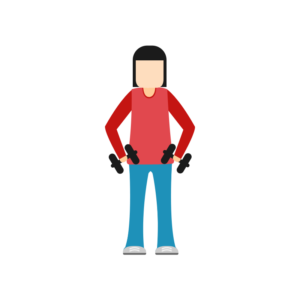
Monday & Wednesday – Upper-body exercise
Tuesday & Thursday – Lower-body exercise
10 minutes of aerobic on as many days as possible.
GETTING STARTED
For extreme beginners, those who have never engaged in any kind of strength training, it must begin with a bodyweight exercise routine.
We have included a set of ten strength training exercises in appendix which do not use any weights. These bodyweight exercises can be done anywhere and anytime, even while traveling for work.
Body-weight vs. External weights:
A commonly observed difference between the results of two is in the type of body they build. Body-weight exercise will give you a lean, healthy body while the latter would result in buffed up muscles, like those of bodybuilders. When compared alongside, the former is low impact with less risk of injury.
With minimum equipment use, bodyweight training is ideal for anyone with a busy schedule, or in a job that requires a lot of travelling.
GOOD TECHNIQUE TIPS FOR SAFE STRENGTH TRAINING:
These tips for safe strength training will help you get the most from your workouts:
- Always do a warm up (slow walk) and cool down (mild stretching).
- Prioritize form (technique) over weight. Poor form can prompt injuries and slow gains.
- Movement should be slow and smooth. Make use of tempo or counts to keep control on pace.
- Practice good breathing technique. Couple going in position with inhale and getting back to initial position with exhale.
- Challenging muscles is important. Continue to increase number of reps or amount of weight, as you progress.
2.2.3. BALANCE EXERCISES
Balance exercises are those that help restore a normal stride and a comfortable posture. Some also work towards maintaining a proper muscular strength while holding objects. These are very low-impact and may not contribute majorly to an adult’s health, but can help avert future injuries. As age progresses our sense of balance worsens. And this can further be ruined by certain medical conditions and lack of flexibility.
We hear a lot of cases of falling among older adults due to a poor balance. Some suffer head injuries while some are left temporarily or permanently disabled. Most common are hip fractures, which often lead to serious health complications and impaired independence.
Activities that help toward improving balance include walking on uneven surfaces like cobblestones or balancing on one leg. Physical fitness styles like yoga and Pilates have a lot of movements, which combine strength and balance.
HOW MUCH TO DO
As an adult, you can have a balance exercise session once every week. Or maybe 10 minutes twice a week. Older adults, however, need to focus more on them. Evidence suggests a marked improvement in risk profile of elderly when engaged in 30 minutes of balance training and muscle strengthening exercises three times a week. This was supplemented with 30 minutes of walking activities twice weekly.[5]
GETTING STARTED
In our exercise appendix, we have included ten balance-enhancing exercises derived from yoga and Pilates. These can be done independently, or with the support of a partner.
GOOD TECHNIQUE TIPS FOR SAFE BALANCING EXERCISE:
- Always begin with support to gain an understanding of how your center of balance shifts through various positions.
- Supplement with strength training for add-on benefits and faster results.
- In case of older adults with risk of falling, practice in a safe, fall-proof place with no pointed or hard surfaces around.
2.2.4. FLEXIBILITY EXERCISES
As the name suggests, flexibility exercises aim at developing a flexible body. But the question is, why or how do we lose flexibility?
Our body is the best adaptive machine that could ever exist. When certain muscle groups remain unused for long periods of time, they shorten and become stiff. This makes one vulnerable to cramps, injuries and balancing issues. A sedentary lifestyle renders us with very little flexibility. Activities like stretching, yoga and Pilates, which focus on stretching these muscles, gently reverse this issue.
Performing them regularly will help increase range of motion, and enhance athletic performance. Think of a less restricted tennis serve or agile movement across the court. Even regular functional abilities improve with flexibility exercises like picking up things from the floor and mental swiftness.
HOW MUCH TO DO
The right time to stretch is when muscles are warm and pliable. It’s best to do it after a strength workout as a cool down, since then it’ll also help relax muscles. For lasting effects, dedicate a day or two in a week. Or maybe a few minutes every day. Majority of health researchers, recommend following an aerobic or strength exercise routine with mild stretching. Since aging drastically affects flexibility, older adults must stretch on a regular basis.
GETTING STARTED
Always check with your doctor before going for any stretching exercise. This becomes even more important in case of joint problems such as arthritis, or if you’ve had a joint replacement. The basic stretch poses that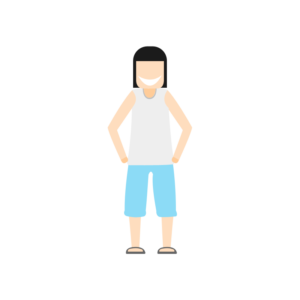 we have provided in this eBook’s exercise appendix are very low impact and will target most of the muscle groups. You can, however, choose according to your preference.
we have provided in this eBook’s exercise appendix are very low impact and will target most of the muscle groups. You can, however, choose according to your preference.
Go for loose fitting clothes as wearing a tight fit might induce a cramp.
GOOD TECHNIQUE TIPS FOR SAFE FLEXIBILITY EXERCISE:
- Always warm up first as warm muscles are more flexible and pliable. This will also ensure a low risk of injury.
- Stretch all muscle groups.
- Always get in and out of stretch slowly and smoothly. Do not bounce as it can induce cramps.
- Stretch only till a point of mild tension. If doing in a group, do not compete with others. Go with your pace. Discontinue if you feel pain and gently massage that area.
- Breathe normally through your nose.
- The optimum time for holding a stretch is 10-30 seconds. If you cannot maintain the hold, do not overexert.
2.2.5. RELAXATION EXERCISES
Relaxation exercises work towards reducing stress and enhancing the overall quality of life and health. They promote a tranquil mind and clarity of thought through its various movements and practices. Many researchers have accepted a significant contribution of relaxation exercises in enhancing the efficiency and outcome of any fitness program. Yet they are always pushed to back and ignored.
Most common relaxation activities are meditation, conscious breathing, stroll in the woods or on a beach, etc. Engaging in pursuits like gardening and painting, or talking to a close friend is also helpful.
The goal of any such activity is to gather all thoughts and focus them on the present.
HOW MUCH TO DO
As already mentioned, relaxation exercises are not considered a mandatory part of a fitness routine and hence, no guidelines on ‘how much’ is necessary are present. Still, a lot of people find it worthwhile to practice them once every day to clear mind of any conflicting thoughts. 10 minutes of mindfulness is all you need. Make it your daily dose of relaxation.
GETTING STARTED
For a beginner, we suggest opting for conscious breathing, which includes breathing from the abdomen, and focusing on the belly’s back and forth movement. It not only soothes tensed nerves, but enhances accessible lung capacity too. You can also meditate on OM (chanting).
Refer to the exercise appendix for more such relaxation exercises and learning their proper technique.
GOOD TECHNIQUE TIPS FOR RELAXATION EXERCISE:
- Focus on breathing. This can be done even as you sit in office. Count to five as you inhale, hold for a five count and then exhale on another five. Do this for a few minutes and feel the difference.
- Take a flower and notice the beauty in its color, delicate petals, soothing smell, etc.
- Engage your senses and notice the sights, sounds, and smells around you.
- Sit in a park and listen to natural sounds like chirping of crickets, bird songs, rustling leaves, wind blowing.
You know, there was a time when you could do all kinds of fitness exercises effortlessly, and willingly.
Junior grade.
At that time, you couldn’t wait for the recess bell so that you could go out in the field and enjoy your favorite sport.
So what changed now?Priorities!
You still have a favorite sport but priorities stop you from pursuing it. Most often, our schedule dominates our priorities. You don’t need to go overboard with one sport. Just blend in a few activities you enjoy, like walking in the woods, or with your dog, taking out some time to observe the scenery as you cycle, etc.
Now, the question is how to blend?
Let’s summarize what you know till now:
- Current fitness level
- Fitness areas where you need to improve
- Basics of every exercise
Keeping all that information at the back of your mind, we believe you are now ready to learn about the lifestyle spaces where the above pegs can fit. Yes, it’s time to tailor your fitness routine that ‘fits’ your lifestyle.
Before we do that, we’d like you to know that there still are lot of things that can ruin all this effort, if left unconsidered. So take a pen and paper and note down all your uninhibited options against every exercise routine. And when you are done doing that, consider the following factors and just cross out those that do not fit your schedule.
2.3 PERSONALIZING THE PLAN TO FIT YOUR BUSY LIFESTYLE
The roadblocks include your:
- Interests
- Local setting
- Personal preferences
- Investment
- Schedule
We’ll now take them up one by one and see how these roadblocks can be turned into stepping stones.
INTERESTS:WHAT DO YOU LIKE TO DO?
Keeping your interests in mind is crucial. Because the first step towards executing and continuing fitness routine is to ‘have fun doing it’. Say, for any reason, you hate jogging. Then no matter how good jogging is for you, you’ll never be able to keep up the schedule.
On the other hand, if you love tennis or dance, you may find it easier to stick with an exercise program that’s built around these activities. Take up a samba or dance class. Or maybe hip hop at home on your favorite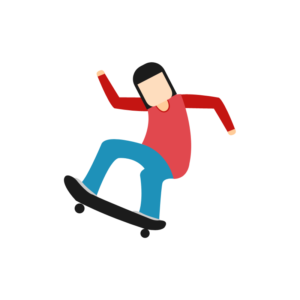 songs. Don’t expect your likes and dislikes to change overnight or when starting out.
songs. Don’t expect your likes and dislikes to change overnight or when starting out.
Also, if you have always wanted to learn some sport, say skateboarding, then it would be a good time to start. Not only will it teach you something new, but boost your enthusiasm too.
Conversely, if you do not like to move around a lot, then you can go for deskercises that are exercises that you can do on your office workstation desk (check desk exercises in the appendix AE-7 which will provide you enough amount of activity at the comfort of your office space).
LOCAL SETTING:WHAT KIND OF SETTING WORKS FOR YOU?
Choosing to walk or run might not be a very good idea for someone who lives in a country with extreme climate. If you still want to go for it, it might call for investment in a treadmill. However, you can still opt for activities like swimming or figure skating.
Similarly, if your city has good sidewalks or trails close by, it will be a good idea to sign up for it. Walk whenever you can. Take stairs instead of elevator. Pedal your way to the nearest grocery store. If it rains a lot in your area, it comes across as a great background setting for a soothing meditation session.
PERSONAL PREFERENCE: DO YOU LIKE EXERCISING ALONE OR WITH OTHERS?
The basic process of relaxation is withdrawal of attention from everything distracting and redirecting it on one thing, which is most often an activity that does not require much brain work.
A reason why relaxation is often ignored in fitness routines is because most people prefer to work out alone. When they focus all their attention on the individual movements, they are able to cover most of the points of any relaxation program.
Others, however, may prefer partnering or exercising in a closed group setting. Some like classroom style of fitness routine where you compete, and get motivated from others.
Choose one which you prefer. There are many mobile apps today that can help you find a fitness enthusiast based in your area to partner with. You can find information on all such mobile apps in the next chapter.
INVESTMENT: HOW MUCH MONEY DO YOU WANT TO SPEND?
Depending on above factors, a lot of your options have already been crossed out. Or may have been replaced or added which is a good thing. Now, you have a clearer map.
Next point of consideration is investment. It becomes a matter of high concern if you are planning to work out alone at home. You might be considering a home gym. Or maybe home fitness DVD programs like P90x[6] or Venus factor.[7]
Regarding a home gym, we would recommend you to first make use of the available resources like water bottles as dumbbells, and bean bag as a Swiss-ball.
If after a month of this routine, you still feel the need to set up a home gym, go for it. You can find info regarding most commonly used equipment in our next section including the types of equipment available in the market, and some smart buying tips.
You might also be juggling with the idea of hiring a trainer or registering for a local fitness club. Great idea!
Still, our advice remains the same. Try it first. Because you certainly do not want ‘keeping up’ with a class schedule as another source of stress for yourself.
Weigh expense against other factors, such as the ability to exercise indoors or participating in a particular outdoor activity. However, some people feel that investing in a gym or personal trainer boosts their motivation.
It’s your call in the end. Only you know what works best for you. Don’t stop yourself from trying all your options to figure out a steady way.
SCHEDULE:WHERE CAN YOU FIT IN EXERCISE?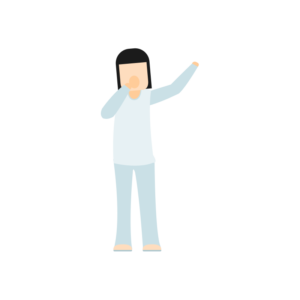
Biological clock is really something.
Some are early risers while some prefer the silence of the night. It’s a great idea to begin your day with exercise. It keeps you energetic and alert all through the day. But if you are not a morning person or work a night shift, then it can become difficult to keep up with a morning fitness routine.
So as mentioned earlier, go for 10 minute chunks of exercising whenever you find time. Or you can work out a combination of long and short bouts that totals up to your weekly goals.
Whether you walk in a business suit or a sweat suit, on city streets or on country roads, it’s still the same left, right, left for health. In fact, it’s not a question of either/or since every walk you take is a step towards good health. It is all about weighing your options, dealing with trade-offs, and working around restrictions.
Just give your health the priority it deserves. And you too can be fit.
Helpful Resources:
- Pranayama – The Beginner’s Guide
- Yoga For Night Shift
- Yoga
- The Science Behind “OM” and Tapping Its Power In Yoga
References: [1] Young DR, Reynolds K, Sidell M, Brar S, Ghai NR, Sternfeld B, Jacobsen SJ, Slezak JM, Caan B, & Quinn VP (2014). Effects of physical activity and sedentary time on the risk of heart failure. Circulation. Heart failure, 7 (1), 21-7 PMID: 24449810. ^Back to Top^ [2] Paffenbarger RS Jr, Hyde RT, Wing AL, & Hsieh CC (1986). Physical activity, all-cause mortality, and longevity of college alumni. The New England journal of medicine, 314 (10), 605-13 PMID: 3945246. ^Back to Top^ [3] Winett, R., & Carpinelli, R. (2001). Potential Health-Related Benefits of Resistance Training Preventive Medicine, 33 (5), 503-513 DOI: 10.1006/pmed.2001.0909. ^Back to Top^ [4] Hiroyuki S, Uchiyama Y, & Kakurai S (2003). Specific effects of balance and gait exercises on physical function among the frail elderly. Clinical rehabilitation, 17 (5), 472-9 PMID: 12952151. ^Back to Top^ [5] The 90 Day P90X Workout DVDs Program Review. (https://workouttrends.com/p90x). ^Back to Top^ [6] The Complete Venus Factor Review with Results Revealed (https://workouttrends.com/thevenus-factor-diet-review-results). ^Back to Top^ [7] Pedometers help people stay active, Stanford study finds by Michelle L. Brandt - Stanford School of Medicine. ^Back to Top^



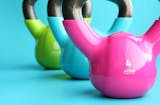

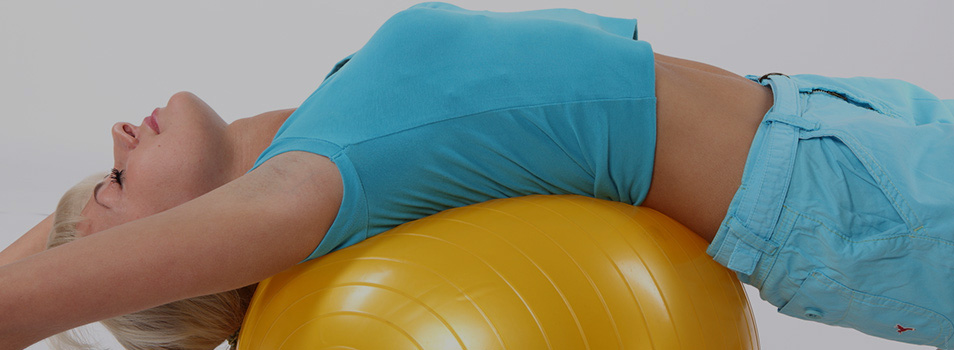
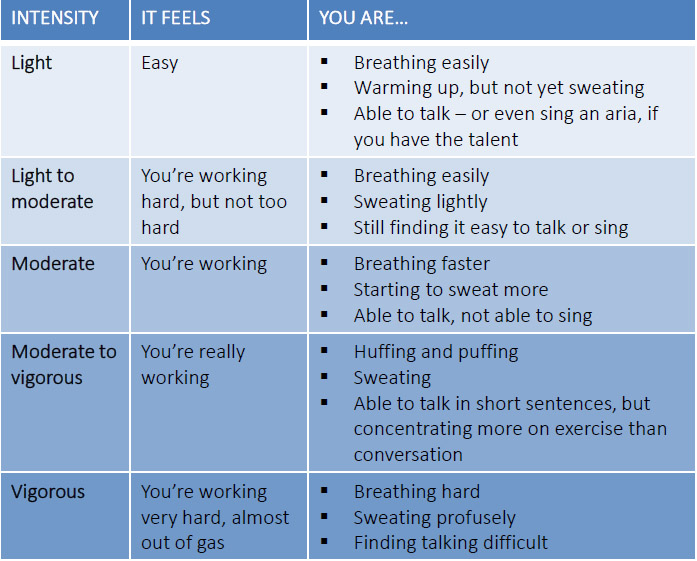
Comments are off this post!